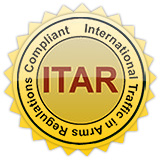Where to have your design completed – insights from the trenches.
You have a new design that needs to be out yesterday. Do you send it to your In-House Design group, do you send it to your trusted outside design house, do you send it overseas to India or China, or do you just do it yourself? This is the dilemma facing all electrical engineers today. Most of the time, the decision is made for you by management, but you might have some say in the matter. Let’s take a look at the advantages/disadvantages of each option, from closest to most distant.
DYI – You open the CAD tool for the first time in a year. This is your second board. The last one took three weeks to complete, and didn’t quite work right. You were able to get your buddy down the hall to look it over and make a couple of fixes, and you got it out. It’s not your fault. You only do a few boards each year. How can you be expected to remember all of the functions of the software? And, oh by the way, they upgraded to the next version, and all of the training you had last year is out the window. There are a few engineers who are actually very good at design work. Assuming you’re not one of them, let’s do the cost analysis on your board. If the average designer can do the board in one week, (40 hours) and with over-head, it costs your company about $100/hour, that’s $4,000 for the board layout. Let’s set $4,000 as the “base”. Assuming you do it, and the average EE makes at least 30% more than the average designer that sets your cost at $130/hour or $5,200. You’re not quite as fast as the average designer, so it will take you two weeks – $10,400. In the mean time, your other Engineering duties are going un-done. We all know that you wouldn’t be doing anything during those two weeks anyway, right?
Option 2 – In house design group. Many companies don’t have this option any more. If they do, you have a “roll of the dice” to get “the good designer”, or you have to wait in line for the designer to finish the other three boards he has on his plate before he can look at yours long enough to tell you that your board is not ready, and you need to wait for the next window to get your board done. Assuming you have a really good in house design group, even if it’s only one designer, you are still going to spend the $4,000 base price. This is the cost we established as a “good” designer in house. It will only take one week – assuming that other “hot” project doesn’t take priority and move your board to the back burner. The advantage you have with the in house designer is two-fold. He/she is close – proximity makes it easy to make changes, co-ordinate the placement and critical routing of your board. You don’t need a late night conference call or to drive across town to ensure your instructions are followed. The second advantage is consistency. You know you will get the same good quality from the designer year after year. You don’t risk getting your board done well one time, and poorly the next.
Option 3 – Outside design group. This is the option that most companies have been “forced” into, in an attempt to lower over-head costs. It is much less expensive to pay a designer only for the hours they work on your board than to pay them for the hours they sit and wait for the next board to come in. In the world of pcb layout, there is either way too much work to do, or way too little work to do. It never seems to even out. Companies can’t afford to have a talented designer sit and play video games while he waits for the engineer to complete his next schematic. Some companies have tried to replace the under-utilized designer by letting the EE do the layout himself (as option 1), but most have gone to Option 3. Problems with the Outside design house – 1 – they don’t do things they way you do them. When you send your board to PCB House A, they have their own formats, notes, and footprints. These documents don’t look anything like what you are expecting. Problem 2 – they are inconsistent. They have one or two really good designers, but those guys are always busy. Once in a while, you get the good one, but more often, you get the new guy. Problem 3 – they are hard to get in contact with. You call and leave a message, or e-mail and they don’t respond. What would take just a second with your in house designer to fix takes three days and 16 e-mails to get right.
The advantage of the outside design house is that they are less expensive. At an average rate of only $75/hour the same 40 hour design would only cost $3,000. You save a thousand dollars on this design, and $4,000 because you don’t have to pay your in-house designer for the next week he would have spent waiting for your next design to come in. If only there was some way to mitigate the negatives.
Option 4 – Overseas Designs – Your boss gets four or five e-mails each day from design houses in China and India who claim to be able to do the board design work for only $15 an hour. Wow, instead of spending $3,000 for the 40 hour design, you would spend only $600! That has got to be much better. Let’s take a look. All of the problems with the Outside Design House listed above, don’t do things your way, inconsistent, and hard to contact become greatly increased, and you frequently add another factor – language. Most of India does speak very good English, but few designers in China do. When you work with the Chinese, they love to say “yes”. They don’t always understand what you want, but they love to say yes. Another significant problem with both India and China is that when you find a designer who is really good, he will quickly find another job at another company and double his hourly rate.
So, which way would you like proceed? Pay too much for your design, or suffer through endless late night video conferences with overseas engineers who don’t really have any idea what you are requesting? Shouldn’t there be another option?
Option 5 – CA Design. At CA Design we respond to the three major problems with out-sourcing, 1 – Have it your way. If you can provide us with a “sample” board that was done the way you like it, our designers have the experience and flexibility to modify our processes to provide you with the data you need, in the format you want it. Just tell us, and it will be done.
2- Consistency – we will assign the same designer to your project every time. All you need to do is tell us which designer you have preference for, and we will ensure that you get that designer. We have many clients who request the same designer over and over again. Even if you don’t request the same designer, our policies and procedures ensure that you will get a good, consistent design ever time. Our motto is that we don’t want you to just accept our work, we want you to be very pleased with it. We survive on your repeat business
3 – Proximity – you are used to being able to just walk down the hall and have access to your designer. What if you didn’t even have to leave your chair? Using “Go To Meeting”, we are able to give you access to your designer. It’s as if you are sitting right beside him/her. No longer do you need to send 25 e-mails to get things your way, just accept the invitation sent to you by the designer and you will see your board on your screen within seconds. You can even take control of the screen, and move those parts just where you want them. We have worked with clients all over the world using Go To Meeting.
4 – Price – With our dispersed work force and each of our independent designers working out of their homes, we are able to provide prices that are even competitive with overseas designers, without the time zone and language problems. We would love the chance to meet or beat any price you get, even those from India.
The choice is clear – CA Design is the best place for your next design.



